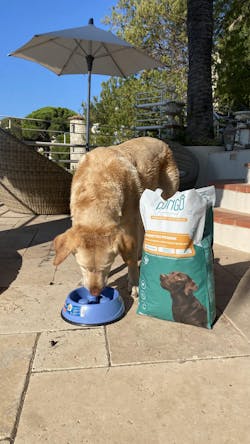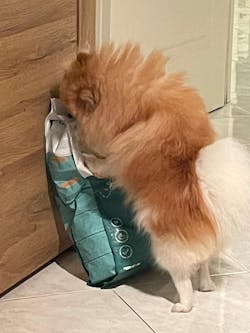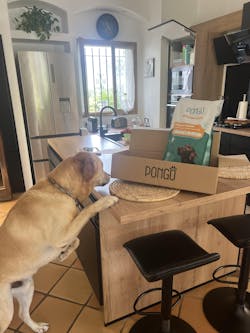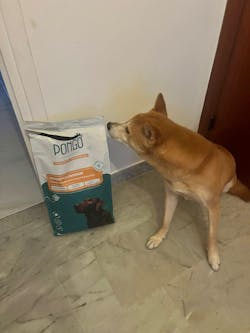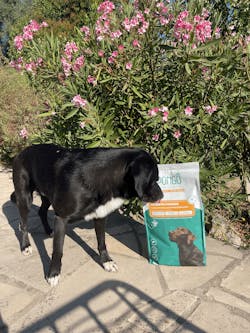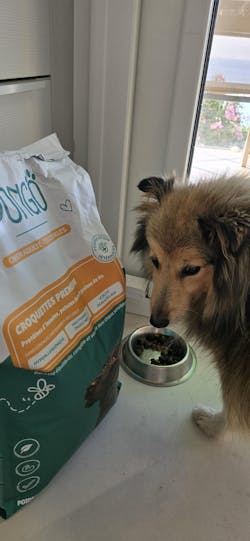Separation Anxiety in Dogs: Simple and Effective Tips !
Your dog or even your puppy may not be able to handle your absence, not even for a few minutes! You notice it because as soon as you walk out the door, they start crying, scratching, barking, or even destroying things around them. Surprised ? Especially if your dog is already an adult ? Don’t worry this behavior is far more common than you might think. It’s a serious issue known as separation anxiety.
But don’t panic ! You’re not alone almost all pet parents face this kind of reaction at some point, and the good news is: there are solutions!
In this article, we’ll help you recognize the key signs of separation anxiety in your dog, distinguish between true emotional distress and simple boredom, go over the most common causes, and most importantly, share simple and effective methods you can start applying today to help calm your dog and make your absences easier to handle.
Want to understand what your dog is feeling and improve their well-being every day? Then follow our guide and offer them a little more peace of mind!
CONTENTS
I. How to Recognize Separation Anxiety in Your Dog
II. The Causes of Separation Anxiety
III. Solutions to Calm Your Dog
IV. Conclusion
I. Signs That Indicate Separation Anxiety in Dogs
It’s completely normal for dogs to show some frustration when we leave the house, even for a few seconds. But separation anxiety is a real behavioral disorder and it's important to spot the signs early so you can take action.
Here are some common symptoms :
-
Persistent barking or howling as soon as you leave
-
Targeted destruction (cushions, furniture, personal items), often near doors or windows
-
Some dogs try to dig under doors or scratch at the walls they’re trying to reach you or escape being alone
-
Indoor urination or defecation when anxious, even if your dog is usually house-trained this isn’t a cleanliness issue, but a sign of intense emotional stress
-
Trembling, panting, pacing, hiding, or following you closely when you're getting ready to leave (like grabbing your keys) this shows pre-departure anxiety
II. What Causes Separation Anxiety in Dogs ?
To properly manage separation anxiety, you first need to understand what’s causing it. The triggers vary from dog to dog, but some situations are particularly likely to lead to this disorder:
-
Dogs that develop a very strong, even overly dependent bond with their owner especially when they spend all their time together with no moments apart. As a result, every separation becomes deeply distressing.
-
Puppies or dogs never taught to be alone gradually, especially common in rescue animals or those adopted from shelters.
-
Big life changes like moving to a new home, a new baby, another pet any disruption to their familiar environment can increase anxiety.
-
Dogs from shelters or rescued from the streets are particularly sensitive to loneliness. Their fear of being abandoned again can trigger strong emotional reactions.
-
Dogs that don’t get enough exercise or mental stimulation can quickly become anxious and stressed. Physical activity and playtime are key for emotional balance.
III. What Solutions Can Help Ease Separation Anxiety ?
Once you’ve identified the signs and causes of your dog’s separation anxiety, it’s time to put in place some gentle but effective strategies to help them better cope with being alone.
1. Gradually Get Your Dog Used to Being Alone
Start small : practice short and frequent absences. Even just going into another room and closing the door can help your dog learn to stay calm when you're out of sight.
2. Create a Comforting Environment
Before leaving, set up a cozy space with their bed and favorite toys. Leave a piece of clothing that smells like you to provide comfort and a sense of security.
3. Maintain a Balanced Routine
Physical exercise is key for dogs with separation anxiety. It helps them release built-up energy, relax after activity, and reduces stress. A good walk or play session before you leave can make a big difference in how they handle your absence.
4. Consult a Dog Trainer
If none of the above methods seem to be working, consider contacting a professional dog trainer. An expert's outside perspective can offer tailored solutions and support.
IV. Conclusion
Separation anxiety in dogs is a common emotional issue but it’s far from hopeless. With understanding, consistency, and natural solutions, you can help your dog regain confidence and calm. The process takes patience and kindness, but the results are well worth the effort.
And remember : a calm dog is a happier, more balanced dog and that strengthens your bond even more.
Take care of your dog, just like they take care of you 🐶
At PONGO, we offer long-lasting natural chew treats made with 100% natural ingredients. They're perfect for keeping your dog mentally stimulated and occupied during your absence. You can also use them as a reward !








